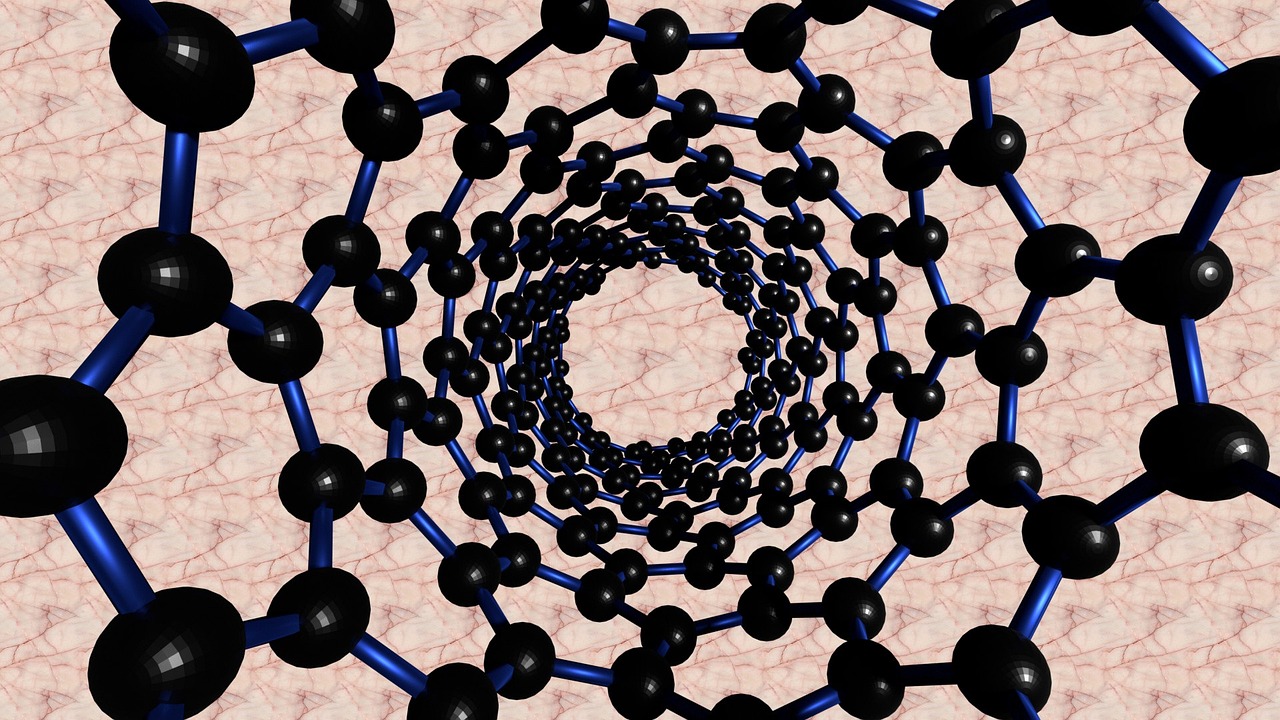In the dynamic landscape of intellectual property, nanotechnology has emerged as a transformative force, driving innovation across diverse industries. The valuation of nanotechnology patents is a complex endeavor, demanding a nuanced understanding of both the technology and the intricacies of intellectual property assessment. This comprehensive guide delves into the key aspects and methodologies involved in the valuation of nanotechnology patents, providing stakeholders with valuable insights for informed decision-making.
Understanding Nanotechnology
Nanotechnology, at its core, involves the manipulation and control of matter at the nanoscale, typically within the range of 1 to 100 nanometers. This section offers a detailed exploration of the fundamental concepts that define nanotechnology. From the principles of quantum mechanics influencing nanoscale behavior to the diverse applications spanning medicine, electronics, and materials science, stakeholders gain a solid foundation for comprehending the unique challenges and opportunities presented by nanotechnology patents.
Diverse Applications of Nanotechnology
Nanotechnology’s impact extends across a myriad of sectors, revolutionizing fields such as healthcare, electronics, energy, and materials science. Stakeholders are guided through a comprehensive overview of the diverse applications of nanotechnology, exploring how innovations at the nanoscale contribute to breakthroughs in drug delivery, electronic devices, renewable energy, and advanced materials. Understanding the breadth of nanotechnology applications is crucial for evaluating the potential market impact and commercial value of patents within this dynamic field.
The Patent Lifecycle in Nanotechnology
Conception and Research Phase
The journey of a nanotechnology patent commences in the conception and research phase. This section explores how the initial ideas and innovations in nanotechnology are conceived, researched, and developed. Stakeholders gain insights into the significance of thorough literature reviews, experimental data, and the early identification of novel concepts. The intricacies of patentability criteria specific to nanotechnology are examined, shedding light on the considerations that shape the valuation of patents at this crucial stage.

Patent Prosecution
Navigating the patent prosecution phase is integral to securing the value of nanotechnology patents. This section delves into the nuances of patent prosecution in the context of nanotechnology, exploring the challenges and opportunities inherent in obtaining a granted patent. From overcoming examiner objections to strategically amending claims, stakeholders are guided through the tactical aspects that influence the strength and enforceability of nanotechnology patents. Understanding the patent prosecution process is essential for assessing the legal standing and potential market exclusivity associated with nanotechnology innovations.
Legal Considerations in Nanotechnology Patent Valuation
Significance of Patent Claims
In the realm of nanotechnology, the significance of patent claims cannot be overstated. This section provides an exhaustive examination of the role of patent claims in the valuation process. Stakeholders gain insights into how the specificity and breadth of claims influence the scope of protection for nanotechnology inventions. Real-world examples illustrate the impact of well-crafted claims in capturing the essence of nanoscale innovations and navigating potential infringement challenges.
Role of Prior Art in Nanotechnology
The labyrinth of prior art in nanotechnology demands careful navigation for accurate patent valuation. This subsection explores the role of prior art in assessing the novelty and inventiveness of nanotechnology patents. Stakeholders are guided through the complexities of conducting thorough prior art searches, considering the unique challenges posed by rapidly evolving nanoscale technologies. Understanding the interplay between nanotechnology advancements and existing knowledge is crucial for determining the competitive edge and market exclusivity associated with patents in this cutting-edge field.
Licensing and Collaboration Strategies in Nanotechnology
Strategic Patent Commercialization
Nanotechnology patent commercialization requires a strategic approach to maximize its financial returns. This section explores the various strategies for patent monetization in the nanotechnology landscape. From licensing agreements to collaborative partnerships and spin-off ventures, stakeholders gain insights into the nuanced avenues for strategically leveraging nanotechnology patents. Real-world case studies illustrate successful examples of how effective commercialization strategies contribute to the valuation and market impact of nanotechnology patents.
Entrepreneurship and Startups in Nanotechnology
For universities and research institutes involved in nanotechnology research, fostering entrepreneurship and spin-off ventures is a viable pathway for patent commercialization. This section delves into the intricacies of establishing and nurturing startups based on nanotechnology patents. From incubation to market entry, stakeholders explore the entrepreneurial journey and its profound influence on the overall valuation of nanotechnology patents. Understanding the challenges and opportunities associated with startup ventures in nanotechnology is crucial for aligning commercialization efforts with the dynamic nature of this field.
Assessing Market Potential in Nanotechnology Patents
Methodologies for Commercial Viability Assessment
The value of a nanotechnology patent is inherently tied to its market potential. This section explores the methodologies for assessing the commercial viability of nanotechnology patents, encompassing market research, competitive analysis, and industry trends. Stakeholders gain insights into the dynamic factors that influence the market potential of nanotechnology innovations, from identifying target markets to evaluating potential competitors. Real-world examples showcase the practical applications of market assessment methodologies in guiding strategic decisions related to the monetization and valuation of nanotechnology patents.
Impact of Emerging Technologies and Innovation
In the ever-evolving landscape of technology, staying ahead of the curve is imperative for nanotechnology patent valuation. This section examines how emerging technologies and innovative trends impact the valuation of nanotechnology patents. From quantum computing to advanced materials, stakeholders explore the dynamic nature of nanotechnology advancements and their influence on patent valuation. Understanding the interplay between nanotechnology and emerging technologies is essential for positioning patents as valuable assets in the face of evolving industry landscapes.
Data Mining for In-Depth Nanotechnology Patent Valuation
At the core of advanced nanotechnology patent valuation lies the application of data mining. This section provides a comprehensive overview of the foundational concepts that underpin data mining in the context of nanotechnology patents. Stakeholders are guided through the principles of extracting patterns and insights from large datasets, offering a systematic approach to uncovering hidden relationships and trends specific to nanoscale innovations. Understanding the nuances of data mining is crucial for harnessing its potential in the in-depth valuation of nanotechnology patents.

Role of Big Data in Nanotechnology Patent Valuation
In the digital age, the sheer volume of data generated in nanotechnology research demands sophisticated tools for analysis. This subsection explores the role of big data in nanotechnology patent valuation, highlighting how data mining leverages vast datasets to uncover valuable insights. From analyzing patent documents to scrutinizing market trends, the integration of big data enhances the depth and accuracy of nanotechnology patent valuation processes. Stakeholders gain insights into how the application of big data analytics contributes to a more comprehensive understanding of nanoscale innovations and their potential market impact.
Patent Landscape Analysis in Nanotechnology
Exploration of the Nanotechnology Patent Landscape
Data mining enables a comprehensive exploration of the patent landscape in nanotechnology, transcending traditional search methods. This section delves into how data mining facilitates the analysis of nanotechnology patent landscapes, allowing stakeholders to identify key players, assess technological trends, and understand the competitive dynamics within specific sectors. By extrapolating insights from large datasets, patent landscape analysis becomes a powerful tool in determining the value and positioning of nanotechnology patents. Real-world examples showcase the practical applications of patent landscape analysis in guiding strategic decisions related to the development, commercialization, and valuation of nanotechnology patents.
Identifying Prior Art and Novelty in Nanotechnology
Unearthing prior art is a critical aspect of nanotechnology patent valuation, influencing the determination of a patent’s novelty and inventiveness. This subsection explores how data mining techniques enhance the identification of prior art by sifting through vast repositories of existing knowledge. By scrutinizing patent documents, academic publications, and technological databases, data mining contributes to a nuanced assessment of a nanotechnology patent’s innovative contribution to the existing body of knowledge. Stakeholders gain insights into the challenges and opportunities associated with identifying prior art in nanotechnology, ensuring a comprehensive understanding of a patent’s novelty in the context of rapidly evolving nanoscale technologies.
Analyzing Technological Trends in Nanotechnology
Dynamic Nature of Nanotechnology Trends
In a landscape marked by the rapid evolution of technology, a dynamic approach to nanotechnology patent valuation becomes imperative. This section navigates through the ever-changing technological trends in nanotechnology, offering stakeholders profound insights into emerging technologies and innovation hotspots. From quantum dots to nanomedicine, stakeholders explore how data mining methodologies and patent landscape analysis equip them with the foresight to anticipate shifts in the technological landscape. By providing a lens into the future of nanotechnology innovation, this exploration influences the valuation of patents in alignment with industry trends, ensuring that nanotechnology patents remain relevant and valuable in the face of evolving industry landscapes.
Overcoming Challenges in Nanotechnology Patent Valuation
While data mining holds immense potential for nanotechnology patent valuation, it is not without its challenges. This subsection delves into the issue of data quality in the context of nanotechnology patents, addressing the importance of accurate and reliable data for effective valuation. Strategies for overcoming data quality issues, such as noise and inconsistencies specific to nanoscale research, are explored to ensure that the insights derived from data mining are robust and dependable. Stakeholders gain a nuanced understanding of the challenges posed by data quality in the context of nanotechnology and explore practical strategies to enhance the accuracy of patent valuation processes.
Ensuring Privacy and Ethical Considerations in Nanotechnology Data Mining
The expansive nature of data mining in nanotechnology raises ethical concerns and privacy considerations. This section navigates through the ethical implications associated with data mining in the context of nanotechnology patent valuation. From protecting sensitive information related to nanoscale research to ensuring compliance with privacy regulations, stakeholders are guided on the ethical use of data mining techniques. Striking a balance between innovation and responsible data practices becomes crucial, and real-world examples showcase instances where ethical considerations have influenced the development and implementation of data mining strategies in the nanotechnology domain.
Integrating Machine Learning and Predictive Analytics in Nanotechnology Patent Valuation
Machine Learning’s Role in Nanotechnology Data Mining
The integration of machine learning algorithms into data mining processes heralds a new era in nanotechnology patent valuation. This subsection explores the role of machine learning and predictive analytics in enhancing the accuracy and efficiency of data mining for nanotechnology patents. From predicting nanotechnology patent values to optimizing licensing strategies, the convergence of data mining and machine learning offers unprecedented possibilities for stakeholders in the intellectual property landscape. Real-world case studies highlight successful applications of machine learning in nanotechnology patent valuation, showcasing instances where predictive analytics have provided valuable insights into the future market impact of nanoscale innovations.
Blockchain Technology in Nanotechnology Data Management
As data security and integrity become paramount in nanotechnology patent valuation, blockchain technology emerges as a potential game-changer in data management. This section investigates the integration of blockchain in data mining for nanotechnology patent valuation, exploring how decentralized and tamper-proof ledgers can enhance the trustworthiness of patent-related data. The innovative synergy between blockchain and data mining promises to revolutionize the way stakeholders interact with and derive value from nanotechnology patent information. Real-world examples showcase instances where blockchain technology has been successfully applied to enhance data security and integrity in the context of nanotechnology patent valuation.

Analyzing Nanotechnology Technological Trends for Future Valuation
In conclusion, delving into the analysis of nanotechnology technological trends provides invaluable insights for future patent valuation. The rapid evolution of nanotechnology, marked by continuous advancements and interdisciplinary collaborations, underscores the dynamic nature of this field. The identification and understanding of emerging trends, whether in materials science, medicine, or electronics, form the cornerstone of informed patent valuation strategies. As nanotechnology continues to weave its influence across diverse industries, stakeholders in patent valuation must remain vigilant, adapting methodologies to encompass the latest technological shifts. Embracing a forward-looking approach ensures that the valuation of nanotechnology patents remains not only reflective of current innovations but also anticipatory of the transformative breakthroughs shaping the future landscape of this cutting-edge field.

Leave a Reply